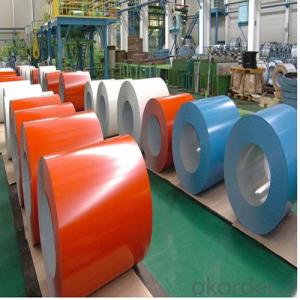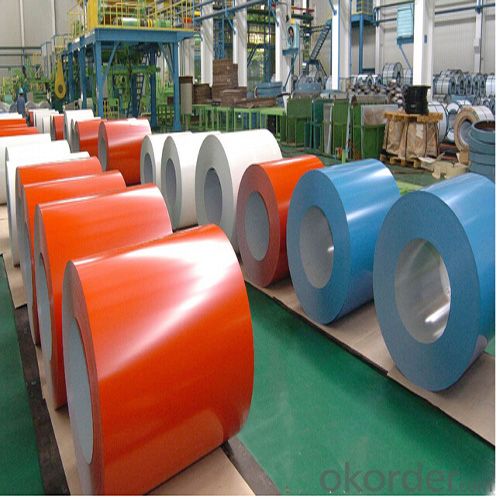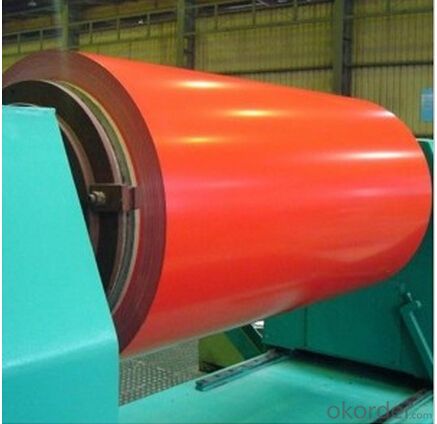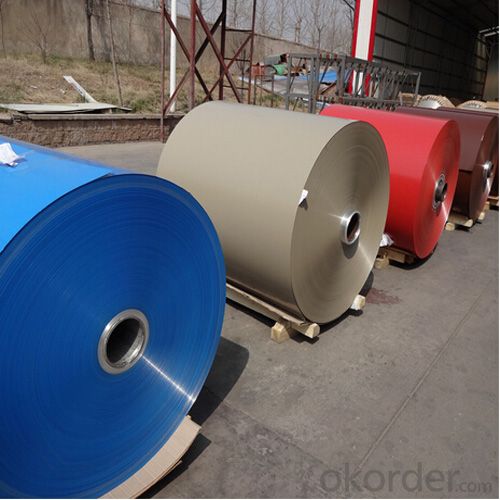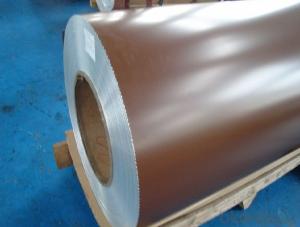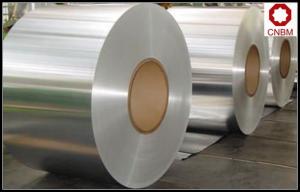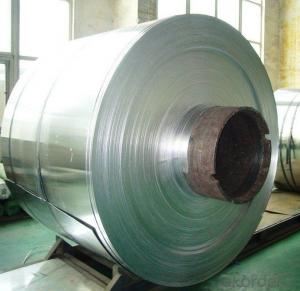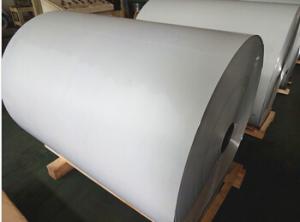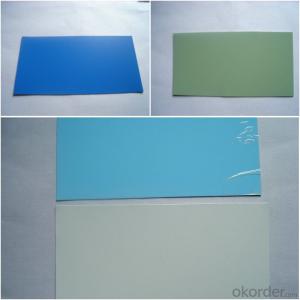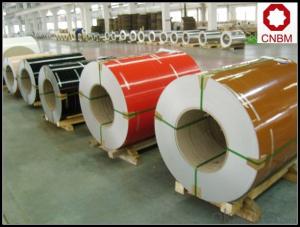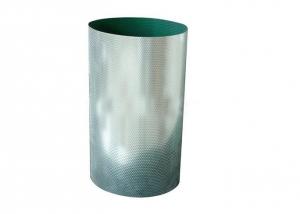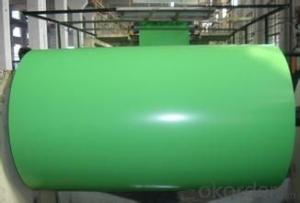Smooth Two Coat Finish Glossy RAL Color Coated Aluminum Coil with High Quality
- Loading Port:
- Shanghai
- Payment Terms:
- TT OR LC
- Min Order Qty:
- 5 m.t
- Supply Capability:
- 10000 m.t/month
OKorder Service Pledge
OKorder Financial Service
You Might Also Like
Specification
1.Structure of Glossy Ral Color Coated Aluminum Coil Description:
Glossy Ral Color Coated Aluminum Coil is Mainly used in signs, billboards, building exterior decoration, bus body, high-rise buildings and factories wall decoration, kitchen sink, lamp, fan leaves, with pieces of electronic, chemical equipment, sheet metal processing parts, deep drawing or spinning hollowware, welding parts, heat exchangers, bell surface and disk, plate, kitchenware, decorations, reflective devices, ect。Quality of material: totally free from defects like white rust, oil patches, roll marks, edge damage, camber, dents, holes, break lines, scratches and free from coil set
2.Main Features of Glossy Ral Color Coated Aluminum Coil:
- High gloss;
- Wide range of color ;
- Good mechanical processing performance;
- Impact and weather resistance;
- Easy for processing and installation;
- Excellent torsion strength
3. Glossy Ral Color Coated Aluminum Coil Images:
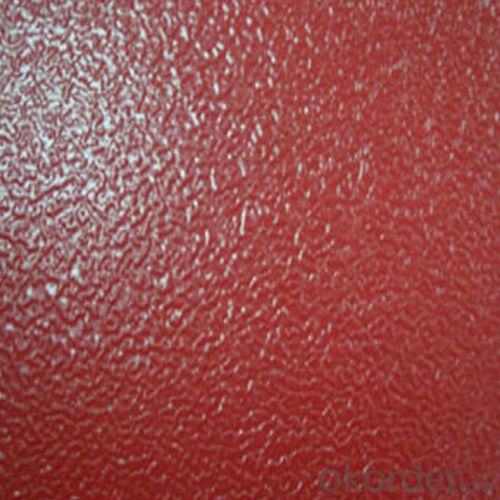
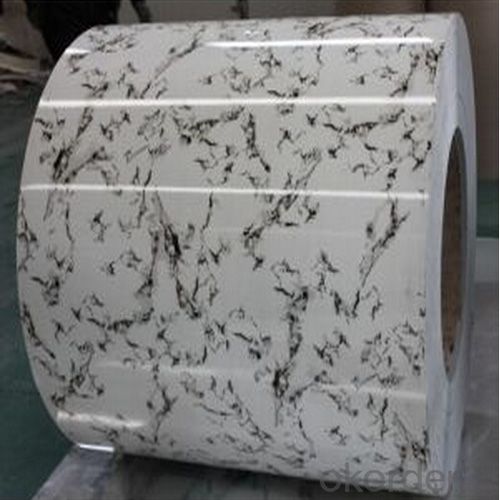
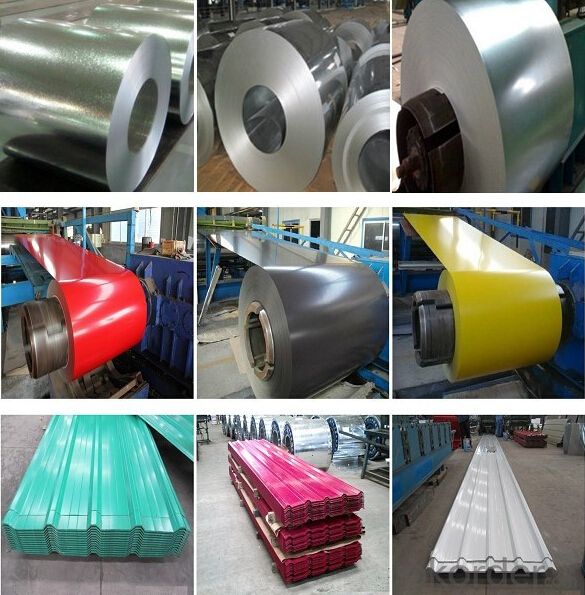
4. Glossy Ral Color Coated Aluminum Coil Specification:
| Alloy No. | Thickness (mm) | Width (mm) | Temper | |
| A1050,A1060, A1070,A1100,A1235,A1245 | 0.2-3.0 | 20-1900 | O,H12,H22,H14,H24,H16,H26,H18 | |
| 4.0-12.0 | 1000-1900 | H111,H112 | ||
| A3003,A3004,A3105 | 0.2-4.0 | 20-1900 | O,H12,H22,H14,H24,H16,H26,H18 | |
| 4.0-12.0 | 1000-1900 | H111,H112 | ||
| A5052,A5083,A5754,A5005 | 0.2-4.0 | 20-1900 | O,H12,H22,H14,H24,H16,H26,H18 | |
| 4.0-12.0 | 1000-1900 | H111,H112 | ||
| A6061,A6082,A6063 | 0.8-3.0 | 20-1900 | O | |
| A8011,A1145,A1235 | 0.005-0.2 | 20-1700 | O,,H18,H24 | |
| ID | 76mm,152mm,200mm,300mm,505mm | |||
5.FAQ
Q1.How long have you been in this product?
A1:More than 10 years.
Q2. What's the minium quantity(MOQ)?
A2. 5 Metric tons
Q3. How long is shipping time?
A3. 7 (ready-made products)-25 days(OEM)
Q4. How do you guarantee the quality?
A4. 1. Cooperating and Exchaning experience with sevral quoted aluminum companies
2. Japanese and Swiss production line and skilled works (regular training and testing)
3. more than 10 years production experience.
Q5. Do you have after sale service?
A5. Yes. Any quality problem occurs within one year, pls take photoes,we will be responsible.
- Q: what language did Aluminum and Uranium originate from ? Who or what were they named for ?
- The ancient Greeks and Romans used alumen (alum, potassium aluminium sulfate, K2Al6(OH)12(SO4)4) in medicine as an astringent, and as a mordant in dyeing. Alum was exported from ancient Greece and Italy. In 1761 the French chemist Louis-Bernard Guyton de Morveau (1737-1816) proposed the name alumine for the base in alum. Guyton de Morveau was instrumental in setting up a standardised system for chemical nomenclature and often collaborated with Antoine Lavoisier, who in 1787, suggested that alumine was the oxide of a previously undiscovered metal. In 1808, Sir Humphry Davy (1778-1829) did experiments for the decomposition of alumine, silex, zircone, and glucine. He failed to isolate the metals in these, as he reported in his paper for the Royal Society of London on 30 June 1808, but he suggested names for the metals (note) Cf. Silicium, Zirconium, and Beryllium (Glucium) Thus he proposed the name alumium for this still undiscovered metal and later agreed to change it to aluminum. Shortly thereafter the name aluminium was adopted to conform with the -ium ending of most elements. Uranium was named by its discoverer German chemist Martin Klaproth, after the last planet to have been discovered Uranus.
- Q: The temperature of the water drops from 93.0°C to 78.0°C. What quantity of heat energy did the piece of aluminum absorb?
- The specific heat of Aluminum is 0.215 cal/g-°C. The calories absorbed (q) would be q = m * c * (T2 -T1) = 22.0 g * 0.215 cal/g-°C * (78.0 °C - 0.3 °C) If you have a different value for the Specific heat of Aluminum, use it in the formula for your calculations. If you knew the mass of the water, you could check your calculations because the heat gained by the Al would be equal to the heat lost by the water, using q = m * c * (T2 -T1), where m is the mass of the water, c = 1.00 calorie/gram °C, T2 = 78.0 °C and T1 = 93.0 °C. The sign of q will be negative.
- Q: Are aluminum coils more cost-effective compared to other materials like copper?
- Yes, aluminum coils are generally more cost-effective compared to other materials like copper. There are several reasons for this. Firstly, aluminum is a more abundant metal than copper, which makes it cheaper to produce. This abundance also means that aluminum prices tend to be more stable and less prone to fluctuations in the market, further contributing to its cost-effectiveness. Secondly, aluminum coils have a lower density compared to copper coils, resulting in lighter weight units. This lighter weight not only reduces transportation and installation costs but also makes aluminum coils easier to handle and maneuver during the manufacturing process. Additionally, aluminum coils have excellent thermal conductivity properties, which means they can effectively transfer heat. This allows for more efficient cooling or heating systems, resulting in lower energy consumption and operating costs over time. Moreover, aluminum has a higher resistance to corrosion compared to copper, making it more durable and requiring less maintenance. This increased lifespan of aluminum coils reduces replacement and repair costs, further enhancing their cost-effectiveness. Lastly, aluminum coils are recyclable, and the recycling process requires significantly less energy compared to producing new aluminum. This aspect contributes to the overall sustainability and cost-effectiveness of aluminum coils. Overall, considering the lower production costs, lighter weight, superior thermal conductivity, increased durability, and recyclability, aluminum coils are indeed more cost-effective compared to other materials like copper.
- Q: Is it safe and effective to heat an aluminum coil using a microwave oven?
- <p>No, you should not use a microwave to heat an aluminum coil. Microwaves can cause aluminum to heat unevenly and potentially spark, which is dangerous. Aluminum is a good conductor of electricity and can reflect microwaves, leading to arcing and fire hazards. Always use microwave-safe materials when heating food or other substances in a microwave.</p>
- Q: How do aluminum coils contribute to sustainable and green building practices?
- Aluminum coils play a vital role in promoting sustainable and environmentally friendly building practices due to the numerous benefits they offer. Let's explore how these coils contribute to such practices: 1. Enhancing energy efficiency: The lightweight nature and exceptional thermal conductivity of aluminum coils make them ideal for insulation purposes. When incorporated into the building's envelope, these coils effectively minimize heat transfer, thereby increasing energy efficiency. Consequently, this reduces the need for excessive heating or cooling, leading to lower energy consumption and fewer greenhouse gas emissions. 2. Ensuring longevity and durability: Aluminum possesses high resistance to corrosion and has a longer lifespan compared to other materials. This durability significantly decreases the need for frequent replacements, which can have a substantial environmental impact. By utilizing aluminum coils in construction, we can reduce waste and effectively conserve resources. 3. Emphasizing recyclability: Aluminum stands out as one of the most recyclable materials available, boasting a high recycling rate. When aluminum coils reach the end of their life cycle, they can be effortlessly recycled and transformed into new products without any loss in quality. By opting for aluminum coils, we actively support a closed-loop recycling system, reducing the demand for virgin materials and minimizing waste. 4. Minimizing carbon footprint: Aluminum production requires significantly less energy compared to metals like steel or copper. This lower energy consumption leads to a reduced carbon footprint during the manufacturing process. Furthermore, using recycled aluminum in coil production requires even less energy, making it an even more sustainable choice. 5. Harnessing reflectivity: Aluminum possesses high reflectivity, allowing it to deflect sunlight and heat away from the building. This characteristic assists in reducing cooling loads, especially in hot climates, thereby reducing the energy required for air conditioning. By incorporating aluminum coils into roofing or cladding, buildings can mitigate their impact on local microclimates and decrease the urban heat island effect. Altogether, aluminum coils actively contribute to sustainable and eco-friendly building practices by promoting energy efficiency, durability, recyclability, and reducing the carbon footprint. By selecting aluminum as a construction material, we can foster greener buildings that conserve resources, minimize waste, and have a lesser environmental impact.
- Q: What are the maximum operating temperatures for aluminum coils?
- The maximum operating temperatures for aluminum coils typically depend on the specific alloy used and the application they are being used in. However, in general, aluminum coils can withstand high temperatures without significant degradation or performance issues. For most common aluminum alloys, such as 3003 and 5052, the maximum operating temperature is around 300-400 degrees Fahrenheit (150-200 degrees Celsius). These temperatures are well within the range of most industrial and commercial applications, including HVAC systems, refrigeration units, and heat exchangers. There are also specialized aluminum alloys, such as 4004 and 4343, that are designed specifically for high-temperature applications. These alloys can withstand temperatures up to 550-650 degrees Fahrenheit (290-340 degrees Celsius) without significant loss of structural integrity or performance. It's worth noting that the maximum operating temperature may vary depending on factors such as the thickness of the coil, the heat transfer conditions, and the duration of exposure to high temperatures. Therefore, it is always advisable to consult the specific manufacturer's guidelines or conduct temperature tests to determine the safe operating limits for a particular aluminum coil in a specific application.
- Q: What does 1060 stand for in 1060 aluminum rolling?
- The aluminum has 5052.5005.1006.1060.1070.2024 types which has different compositions. Like iron, different carbon content and different properties of iron.
- Q: How do aluminum coils contribute to LEED certification requirements?
- Aluminum coils contribute to LEED certification requirements by fulfilling several criteria. Firstly, aluminum is a highly sustainable material as it is 100% recyclable and has a low carbon footprint. This aligns with LEED's focus on reducing environmental impact. Additionally, aluminum coils are often used in energy-efficient HVAC systems, which can help buildings achieve energy efficiency credits required for LEED certification. Furthermore, aluminum coils are durable and long-lasting, reducing the need for frequent replacements, which aligns with LEED's focus on durability and life-cycle assessments. Therefore, the use of aluminum coils can positively impact a building's LEED certification by contributing to sustainability, energy efficiency, and durability requirements.
- Q: Is it possible to utilize aluminum coils in creating art pieces or decorative items?
- <p>Yes, aluminum coils can be used to make artworks or decorations. Aluminum's malleability and durability make it an excellent material for crafting. It can be bent, twisted, and shaped into various forms, allowing for creative expression in art and design. Additionally, aluminum's resistance to corrosion and weathering makes it suitable for both indoor and outdoor decorative pieces. Artists often appreciate its lightweight nature and the metallic finish that can be polished or painted, offering versatility in artistic applications.</p>
- Q: What are the common maintenance practices for aluminum coils?
- To maintain aluminum coils in good condition, it is necessary to regularly clean them, inspect for any damage or corrosion, and ensure proper airflow around them. Cleaning is crucial to eliminate accumulated dirt, debris, and other contaminants. This can be achieved by gently brushing or vacuuming the coils, or by using a mild detergent and water solution for more stubborn dirt. It's important to avoid the use of harsh chemicals or abrasive materials that could harm the aluminum surface. Inspecting the coils for damage or corrosion is also essential for their performance and longevity. Any signs of physical damage, like dents or bends, should be promptly addressed to prevent further deterioration. Additionally, corrosion can occur due to exposure to moisture or chemicals, so it's important to check for rust or discoloration. If corrosion is present, it should be treated and the cause of it should be identified and resolved to prevent future damage. Proper airflow around the coils is crucial for efficient operation. Obstructions or blockages in the surrounding area should be cleared to ensure adequate air circulation. This may include removing debris or objects that restrict airflow and ensuring appropriate spacing between the coils and nearby objects. Regular inspection of air filters and the ventilation system is also important to prevent any restrictions that could hinder airflow. In conclusion, regular cleaning, inspection, and maintenance of aluminum coils are necessary to ensure optimal performance and prolong their lifespan. It is advisable to follow manufacturer guidelines and seek professional advice if any issues or concerns arise.
Send your message to us
Smooth Two Coat Finish Glossy RAL Color Coated Aluminum Coil with High Quality
- Loading Port:
- Shanghai
- Payment Terms:
- TT OR LC
- Min Order Qty:
- 5 m.t
- Supply Capability:
- 10000 m.t/month
OKorder Service Pledge
OKorder Financial Service
Similar products
Hot products
Hot Searches
Related keywords
